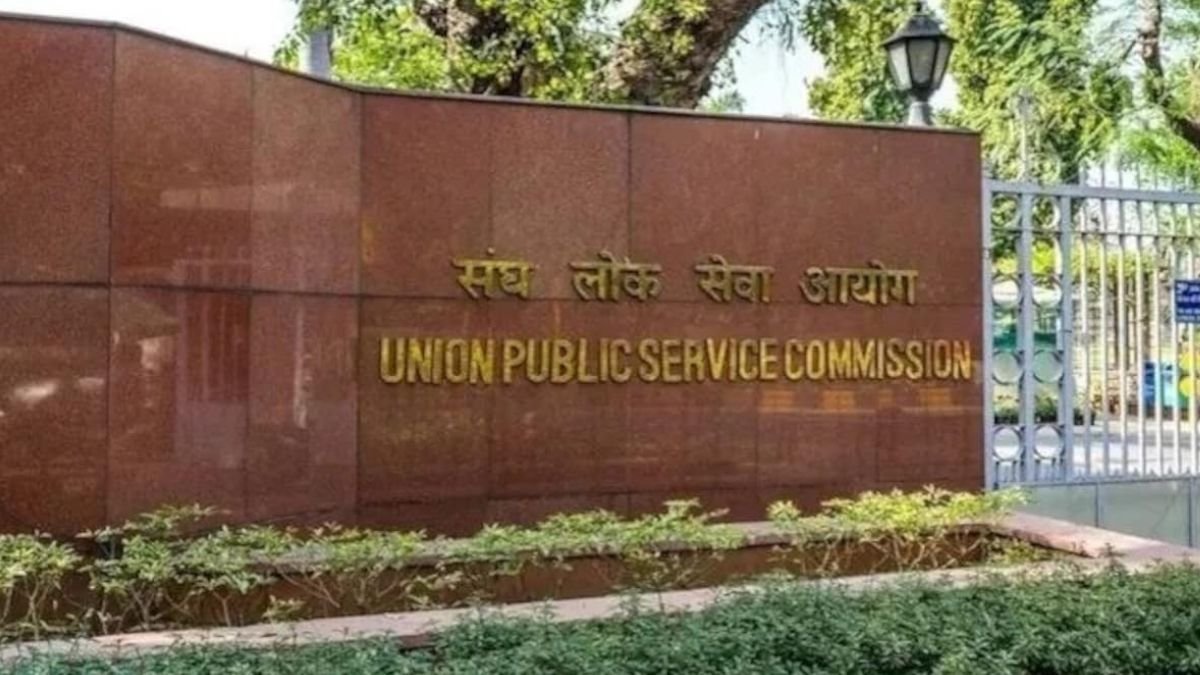Why in the News?
- Researchers at the Institute for Plasma Research (IPR), Gandhinagar, have published a roadmap proposing India’s first fusion electricity generator, SST-Bharat, and a timeline to a demonstration reactor by 2060.
- The roadmap outlines a fusion–fission hybrid approach, cost estimates (≈ ₹25,000 crore for SST-Bharat), and technological steps—drawing attention to India’s position in global fusion efforts and the policy choices required.
Key Highlights
- Roadmap and Project Vision
- The IPR team proposes the Steady-state Superconducting Tokamak-Bharat (SST-Bharat) as the next step after experimental machines.
- SST-Bharat is planned as a fusion–fission hybrid with a rated output of 130 MW, of which 100 MW would come from fission and 30 MW from fusion, targeting a net 5× input-to-output ratio for the fusion component.
- The broader ambition is to build a full-scale demonstration fusion reactor by 2060 with a target Q (output/input) of 20 and output of 250 MW.
- Basics of Fusion and Why It Matters
- Nuclear fusion fuses light nuclei to release energy—this is the process that powers stars.
- Compared with fission, fusion promises lower volumes of long-lived radioactive waste, potentially simpler waste management, and a much larger theoretical fuel supply (e.g., isotopes of hydrogen).
- Achieving controlled fusion on Earth requires extreme temperatures and confinement; two principal approaches are inertial confinement and magnetic confinement—India is focusing on the latter (tokamaks).
| 1. Inertial Confinement Fusion (ICF)
Principle: Uses intense laser or ion beams to rapidly compress and heat a tiny fuel pellet (usually deuterium–tritium). Process: 1. High-power lasers hit the pellet surface. 2. The outer layer explodes outward, pushing the inner layers inward (implosion). 3. This compresses the fuel to extreme density and temperature for a very short time. 4. Fusion occurs before the pellet disassembles. Challenge: Requires precise symmetry in compression and enormous laser energy. 2. Magnetic Confinement Fusion (MCF) Principle: Uses strong magnetic fields to confine hot plasma long enough for fusion to occur. Process: 1. Hydrogen isotopes (deuterium–tritium) are heated into plasma. 2. Magnetic fields in a tokamak (doughnut-shaped reactor) keep the plasma away from reactor walls. 3. Plasma is heated to ~100 million °C (hotter than the Sun’s core). 4. Nuclei fuse, releasing energy. Challenge: Maintaining plasma stability for a long duration without it leaking or cooling. |
- India’s Experimental Base and Performance Targets
- India already operates the SST-1 tokamak, which has achieved plasma durations on the order of ~650 milliseconds and is designed for longer runs up to 16 minutes.
- International facilities such as WEST (22 minutes plasma) and the Joint European Torus inform performance benchmarks; ITER aims for Q ≈ 10 while commercial plants expect Q ≈ 20.
- The roadmap positions SST-Bharat as the engineering scale-up from SST-1 toward continuous, steady-state operation.
- Technology, Modelling and Materials Strategy
- The IPR team emphasises digital twins—real-time virtual replicas of tokamaks—to test scenarios and reduce physical trial costs.
- They propose machine-learning-assisted plasma control, development of radiation-resistant materials, and advances in superconducting magnet technology as critical enablers.
- These technologies are framed as dual-use: even if fusion commercialisation is delayed, they will benefit other high-tech sectors.
- Global Context, Timelines and Economics
- Globally, timelines vary: the UK STEP aims at the 2040s, some U.S. private firms claim 2030s demonstrations, and China’s EAST and Europe’s ITER are long-term projects.
- India’s target (2060) is comparatively cautious and publicly funded, reflecting modest budgets and limited private-sector involvement.
- Experts caution that economic viability remains unproven and fusion must compete with cheaper, scalable renewables and established fission programmes.
Key Terms
- Tokamak
- A tokamak is a device for magnetic confinement fusion shaped like a torus (doughnut).
- It uses a combination of toroidal and poloidal magnetic fields to stabilise the plasma and prevent contact with the vessel walls.
- The tokamak design concentrates on achieving high plasma temperatures, sufficient density, and long confinement time—three components of the fusion triple product.
- Major engineering challenges include handling heat fluxes, managing plasma instabilities, and integrating superconducting magnets.
- Most large international fusion projects (ITER, JET, EAST) are tokamak-based because of the concept’s mature experimental pedigree.
- Fusion versus Fission
- Fusion joins light nuclei (e.g., isotopes of hydrogen) to form heavier nuclei, releasing energy; fission splits heavy nuclei (e.g., uranium) into lighter fragments.
- Fusion reactions generally produce shorter-lived radioactive byproducts and less long-term nuclear waste than fission, although some activation of structural materials still occurs.
- Fission is a proven commercial technology; fusion remains experimental and faces hurdles in confinement, materials and net energy gain.
- Fuel availability differs: fusion uses abundant isotopes like deuterium (from water) and lithium breeds tritium, while fission depends on mined uranium and enrichment.
- Policy implications vary: fusion promises less contentious waste management, but its uncertain costs and timelines affect energy planning.
- Q Value (Fusion Gain Factor)
- The Q value measures the efficiency of a fusion reactor and is defined as fusion power output divided by external input power for plasma heating.
- Q = 1 means breakeven (fusion produces as much power as is used), Q > 1 indicates net energy production; commercial targets often aim for Q ≫ 1 to cover conversion and plant overheads.
- Q pertains to plasma physics; the overall plant net gain must also account for conversion efficiency from fusion thermal power to electricity.
- Different fusion experiments report different Q metrics (e.g., plasma Q, engineering Q), so comparisons require careful specification.
- Improving Q involves raising plasma temperature, density, and confinement time—the components of the fusion triple product.
- Plasma Confinement and Stability
- Plasma is an ionised gas of nuclei and electrons that must be heated to extremely high temperatures for fusion to occur.
- Confinement time is the duration plasma remains hot and dense enough before losses occur; longer confinement aids net energy production.
- Stability problems such as magnetohydrodynamic (MHD) instabilities and edge localized modes (ELMs) can rapidly degrade confinement and damage components.
- Active control techniques, including magnetic shaping, feedback systems, and pellet fueling, are used to mitigate instabilities.
- Advances in diagnostics and real-time control are essential to push confinement toward commercial viability.
- Digital Twin
- A digital twin is a high-fidelity virtual model that mirrors a physical system in real time using sensor data and simulations.
- In fusion, digital twins can simulate plasma behaviour, materials response, and component interactions under varying scenarios.
- They reduce the need for costly physical prototyping and enable accelerated iteration of designs and control algorithms.
- Successful digital twins require accurate physics models, high-quality data acquisition, and robust computing infrastructure.
- Their use also raises needs for cyber-security, data governance, and cross-disciplinary teams that combine domain science with AI expertise.
- Superconducting Magnets
- Superconducting magnets enable the strong magnetic fields needed for tokamak confinement with lower continuous energy consumption than resistive coils.
- They typically use low-temperature superconductors (e.g., NbTi, Nb3Sn) or emerging high-temperature superconductors for higher fields.
- Key challenges include cryogenic systems, mechanical stress under high fields, and radiation effects on superconducting materials.
- Advances in magnet technology directly affect achievable magnetic field strength and hence confinement performance.
- Industrial capability to produce large, high-quality superconducting coils is a strategic asset for fusion programmes.
Implications
- Energy Security and Decarbonisation
- If realised, fusion could provide a low-carbon, high-density baseload source that complements variable renewables and supports India’s net-zero
- Fusion’s fuel profile could reduce reliance on imported fossil fuels and uranium supply chains.
- Industrial and Technological Upgradation
- Fusion R&D would strengthen domestic capabilities in superconductors, high-temperature engineering, and plasma modelling, potentially upgrading India’s high-technology manufacturing base.
- These skills could spill over to sectors such as aerospace, semiconductors and defence.
- Research Ecosystem and Human Capital
- A long-term fusion programme requires sustained investment in skilled scientists, engineers, and institutions, creating career pathways and international collaborations.
- Digital twin and AI work will demand cross-disciplinary training linking physics, computing and materials science.
- Economic and Fiscal Trade-offs
- Large capital outlays (SST-Bharat: ₹25,000 crore) and recurring R&D costs will compete with immediate priorities like solar, wind, grid expansion, and social spending.
- The delay to commercial returns (possibly beyond mid-century) means careful cost-benefit and opportunity-cost analysis is required.
- Strategic and Geopolitical Dimensions
- Fusion capability has strategic value in terms of technological autonomy and soft power, and may deepen partnerships with ITER and other international programmes.
- Conversely, fusion-linked technologies (e.g., plasma, materials) raise dual-use questions that will require governance safeguards.
Challenges and Way Forward
| Challenge | Way Forward |
| Scientific and engineering uncertainty in achieving sustained Q > 1 and continuous operation | Maintain staged, measurable milestones (SST-1 → SST-Bharat → demo reactor) with independent peer review and international collaboration. |
| High capital and operational costs compared with alternatives | Combine public funding with incentives to attract strategic private partners and international co-funding; prioritise cost-reduction roadmaps. |
| Lack of robust private-sector involvement in India | Design fiscal and regulatory incentives (R&D tax credits, public-private partnerships) to catalyse domestic start-ups and industry participation. |
| Materials and component challenges (radiation, superconductors) | Invest in national materials programmes, test facilities, and supply chains for radiation-hard alloys and high-field superconductors. |
| Competing energy priorities and policy trade-offs | Position fusion as long-term strategic R&D while continuing aggressive deployment of renewables and fission where cost-effective. |
Conclusion
The IPR roadmap for SST-Bharat sets out an ambitious but cautious path for India to join global efforts in controlled fusion. While scientific progress and technological spillovers justify sustained investment, economic viability and timelines remain uncertain. India’s approach should therefore combine pragmatic milestones, stronger industry engagement, and parallel investments in immediate low-carbon options to secure both near-term energy goals and long-term strategic gains.
| EnsureIAS Mains Question
Q. Critically examine India’s roadmap for fusion energy (SST-Bharat) in the context of scientific feasibility, economic viability and national energy priorities. What policy measures should India adopt to balance long-term fusion R&D with immediate decarbonisation goals? (250 Words) |
| EnsureIAS Prelims Question
Q. With reference to controlled thermonuclear fusion, consider the following statements: 1. The tokamak concept uses magnetic confinement to hold high-temperature plasma in a toroidal chamber. 2. The Q value denotes the ratio of fuel input mass to the electrical output of the reactor. 3. Digital twins and machine learning can help accelerate development by simulating plasma behaviour and optimising design. Which of the statements given above is/are correct? Answer: (B) 1 and 3 only Explanation: Statement 1 is correct: The tokamak is a toroidal device that uses strong magnetic fields to confine hot plasma away from material walls, enabling conditions for fusion reactions to occur. (≈50 words) Statement 2 is incorrect: The Q value is the ratio of fusion power output to external power input used to heat and sustain the plasma, not the ratio of fuel mass to electrical output. Q > 1 means more fusion energy out than input energy. (≈50 words) Statement 3 is correct: Digital twins create virtual replicas of tokamaks to test scenarios, and machine learning assists plasma control and design optimisation; both reduce costly physical experiments and speed up engineering cycles. (≈50 words) |
|
Also Read |
|
| UPSC Foundation Course | UPSC Daily Current Affairs |
| UPSC Monthly Magazine | CSAT Foundation Course |
| Free MCQs for UPSC Prelims | UPSC Test Series |
| ENSURE IAS NOTES | Our Booklist |





